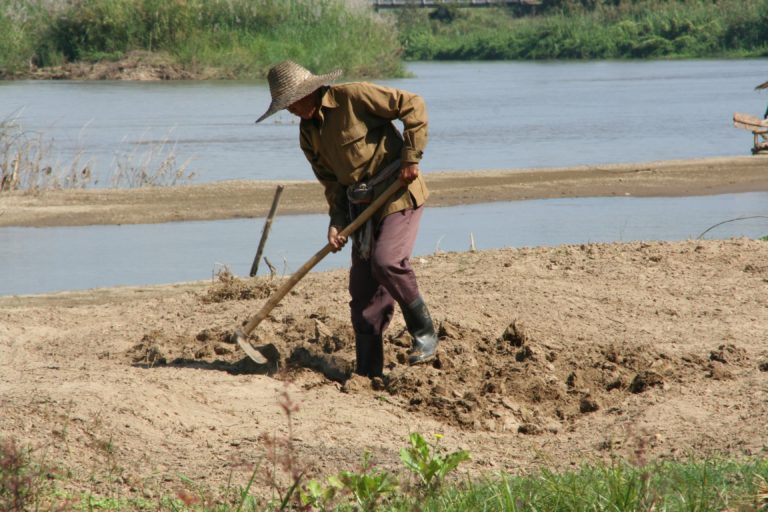Hot Working Environments

Share this step
Hot Workplaces
Some workplaces have special challenges related to high temperatures. Such workplaces are for instance outdoors in tropical and subtropical areas, such as agricultural work, road paving, outdoor construction, forestry, powerline maintenance, traffic regulation, fire fighting and mining. Also, indoor work may be related to very high temperatures, such as work in smelteries.
Iron foundries are workplaces with very high temperatures.
© G. Tjalvin
Physiology and Hot Working Environments
The human body has a core temperature of 37°C. To maintain this temperature the body has several mechanisms. In the brain, heat sensors are located in the hypothalamus. When temperatures exceeds 37°C they send out warning signals which causes
- Increased blood flow in the skin to increase heat loss
- Sweating (evaporation)
This way, the body copes with high temperature levels. Body heat balance is simply a balance between the body’s heat gain and heat loss.
Sources of heat
Air temperature, wind and humidity
Radiation from the sun, machines and processes
Muscular work
How the body loses heat
Convection
Radiation
Evaporation
 Firefighters experience high temperatures during their work, due to the fire and the hard physical work they perform. © B.E. Moen
Firefighters experience high temperatures during their work, due to the fire and the hard physical work they perform. © B.E. MoenHeat Stress and Heat Stroke
Heat stress symptoms
Nausea, vomiting
Fatigue, weakness
Headache, dizziness
Muscle cramps and aches
Heat stroke is a true medical emergency
that is often fatal if not
treated properly and promptly.
Heat stroke symptoms/signs
High body temperature
No sweating
Red, hot skin with rash (tiny red spots)
Difficulty breathing
Strange behaviour, confusion
Cramps
Coma, death
All workers and leaders should be aware of signs of heat stress to prevent the serious health effects from occurring. Signs of heat stress are often treated simply by moving the worker to a cool place to relax and by giving him/her water and salt.
Measuring Environmental Temperature
These are the four main variables that influence the degree of heat stress: Air temperature, relative humidity, radiant temperature and wind speed. These variables can be measured, but you need to have the correct instruments and you need to learn how to use them.
 Wet bulb and dry bulb thermometer. © Colourbox
Wet bulb and dry bulb thermometer. © Colourbox
We can use the following instruments:
A thermometer (sometimes called dry-bulb thermometer) is used to measure air temperature in the shade. Air temperature can vary from below zero to up to about 50°C;
A wet-bulb thermometer is used to measure the humidity
A globe thermometer is used to measure radiant temperature, which can be quite different from air temperature. The thermometer’s bulb is placed in the middle of a 15 cm diameter hollow black copper sphere. The black globe absorbs radiation and warms the air inside.
An anemometer is a wind speed gauge.
There are many different expressions used for temperature, and it is necessary to know the difference between them if you read literature on this topic. You can find an overview of different expressions and definitions on temperature in the pdf-file at the download section. (Temperature Expressions).
Working Environment Regulations
During working hours, the temperature in all indoor workplaces must be reasonable. There’s no clear laws for minimum or maximum working temperatures, eg when it’s too cold or too hot to work. Some countries have guidelines, suggesting levels of temperature for certain types of work. For instance, a minimum of 16ºC or 13ºC is suggested for persons performing physical work. There’s no guidance for a maximum temperature limit. The risk of developing heat stroke is high at temperatures above 40ºC.
Preventing Heat Stresses in the Working Environment
We can treat heat stress and heat stroke, but the most important is to prevent these situations at work. The main methods for prevention are the same as always in occupational health:
- Remove the agent; eliminate or substitute
- Reduce exposure by environmental changes
- Personal protective equipment
Precautions for Workers in Hot Environments
If workers can avoid the heat, this is the best solution. When this is not possible, the period of heat exposure can be restricted. Personal protective equipment in this situation can be light clothing. When working outdoors, a hat for sun protection can be very important.
 A hat is a great protection against heat stress. © G. Tjalvin
A hat is a great protection against heat stress. © G. Tjalvin
Workers who have to be exposed to hot conditions should be of good health and acclimated to the environment. In hot environments the workers should have good access to water and drinks with salt supplements. They should have possibility to take breaks out of the sun and there should be routines for changing work tasks, if possible.
Tourist guides form an occupational group which is increasing in numbers in many countries. The guide below is working outdoors in the tourist attraction Lalibela in Ethiopia. He needs a hat to protect him from the sun, as it can be very hot during his work. However, the hat also protects from rain showers – also common from time to time in this area.
 Guide in Lalibela, Ethiopia.
Guide in Lalibela, Ethiopia.
© B. Moen
Share this
Occupational Health in Developing Countries

Occupational Health in Developing Countries


Reach your personal and professional goals
Unlock access to hundreds of expert online courses and degrees from top universities and educators to gain accredited qualifications and professional CV-building certificates.
Join over 18 million learners to launch, switch or build upon your career, all at your own pace, across a wide range of topic areas.
Register to receive updates
-
Create an account to receive our newsletter, course recommendations and promotions.
Register for free







